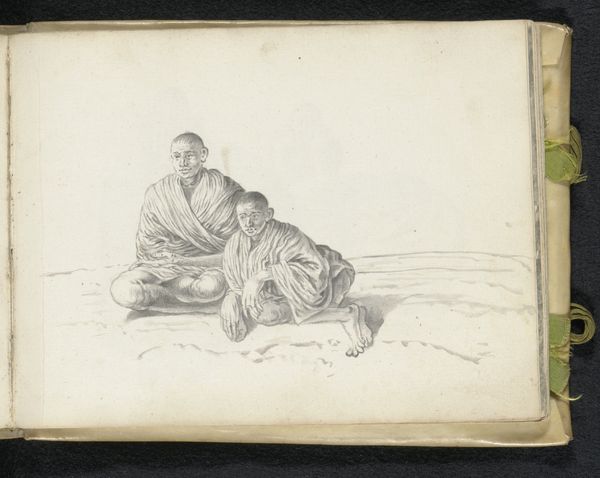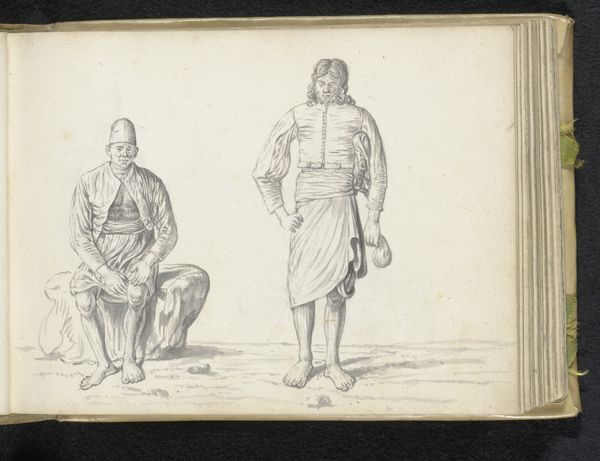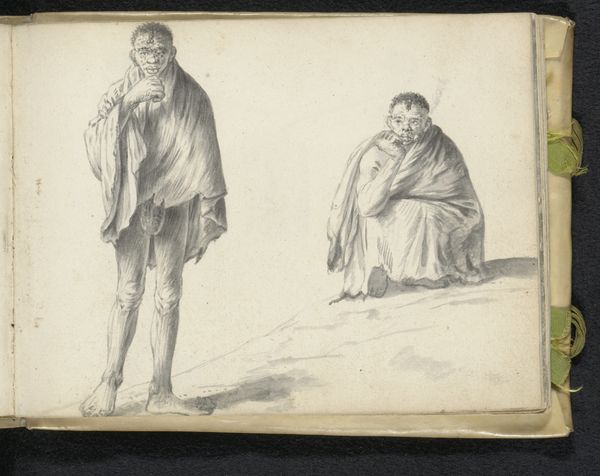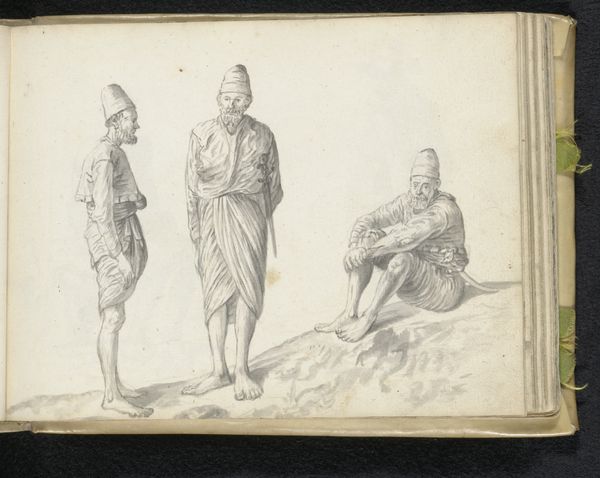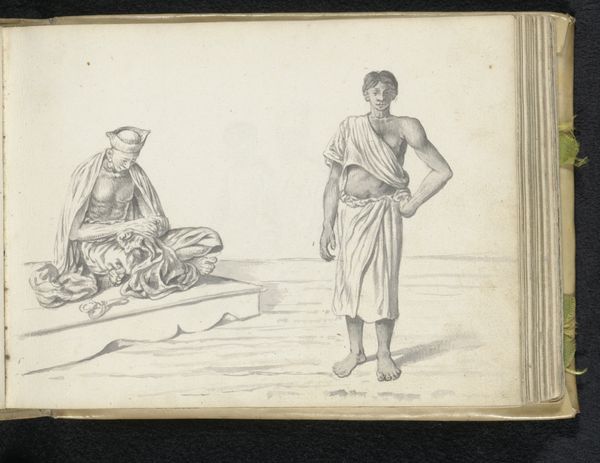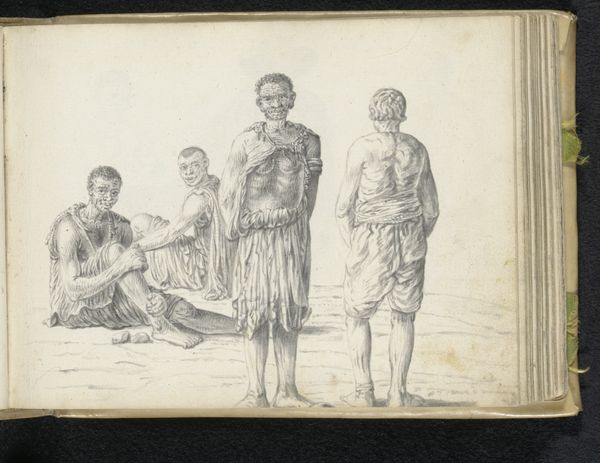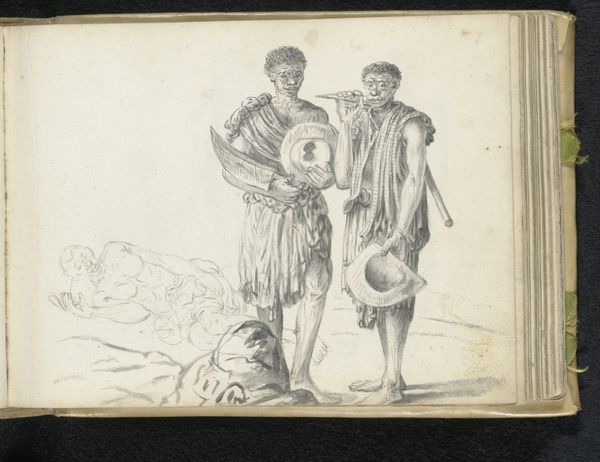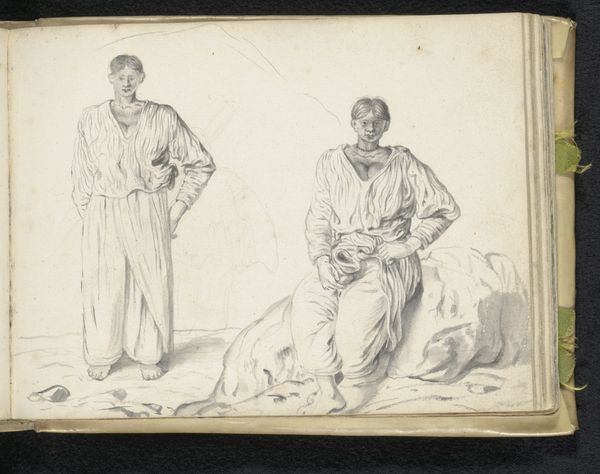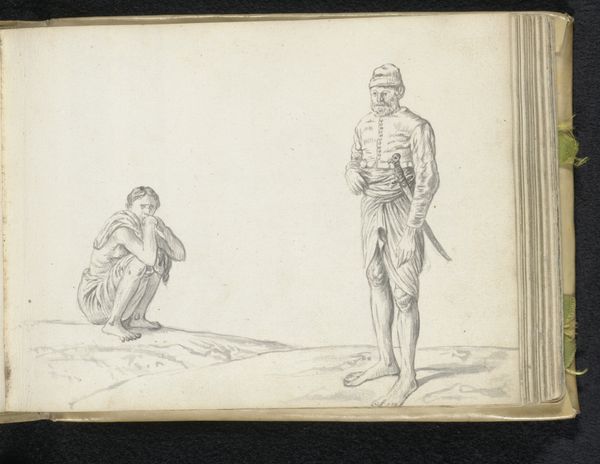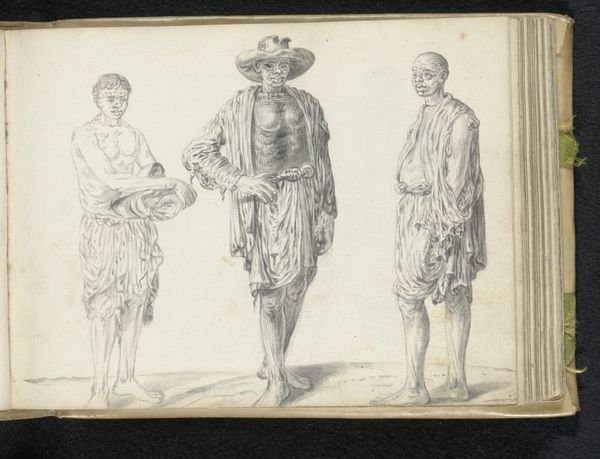
drawing, paper, pencil
#
portrait
#
drawing
#
aged paper
#
toned paper
#
light pencil work
#
quirky sketch
#
dutch-golden-age
#
sketch book
#
figuration
#
paper
#
personal sketchbook
#
coloured pencil
#
pencil
#
sketchbook drawing
#
genre-painting
#
sketchbook art
#
watercolor
#
realism
Dimensions: height 148 mm, width 196 mm
Copyright: Rijks Museum: Open Domain
Esaias Boursse sketched these two labourers using graphite, but we don't know exactly when or where. The figures appear to be men of colour, possibly from a Dutch colony. Boursse worked for the Dutch East India Company, which dominated trade routes during the 17th century and it is possible that the drawing was made during one of his voyages. The contrast between the standing and squatting figures may reflect hierarchies inherent in Dutch colonial society. Is the standing man a supervisor? Is the squatting man fatigued from physical labour? Without more information, we can only speculate. The drawing raises important questions about the representation of labour and colonialism and in order to better understand the drawing, one might research the visual culture of the Dutch East India Company and study the Company's archives, including travel journals and correspondence. Art isn't made in a vacuum, and historical context is key to unlocking meaning.
Comments
No comments
Be the first to comment and join the conversation on the ultimate creative platform.
